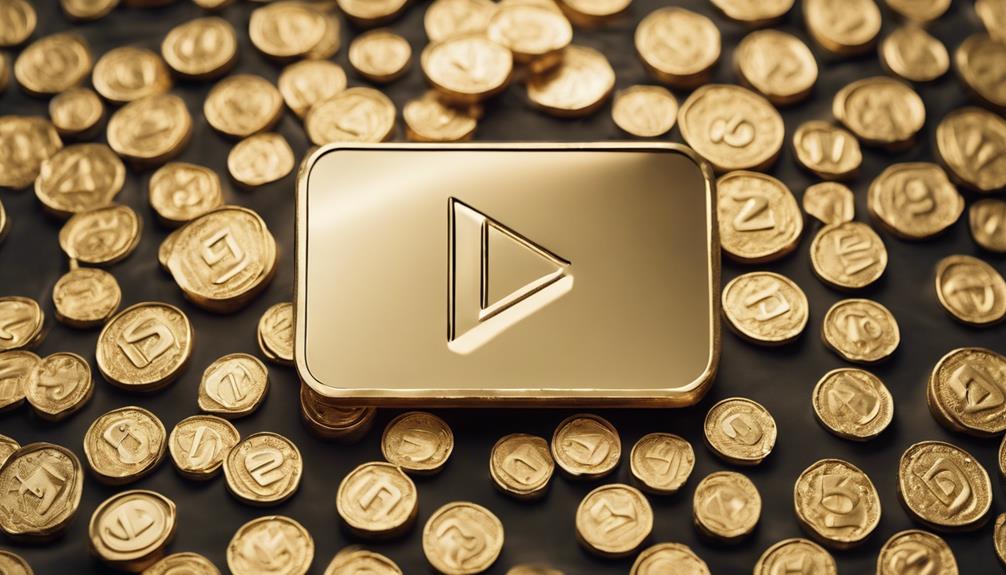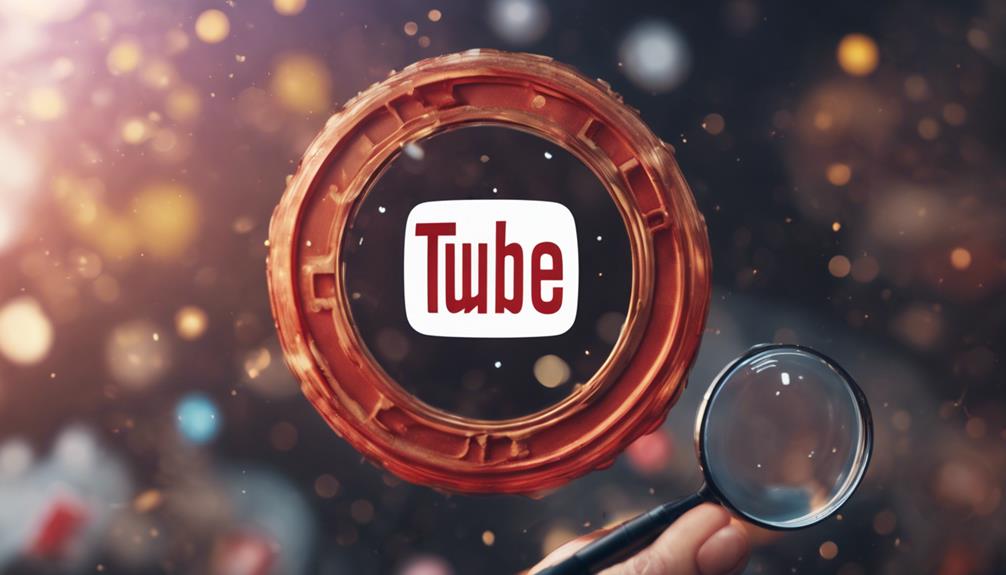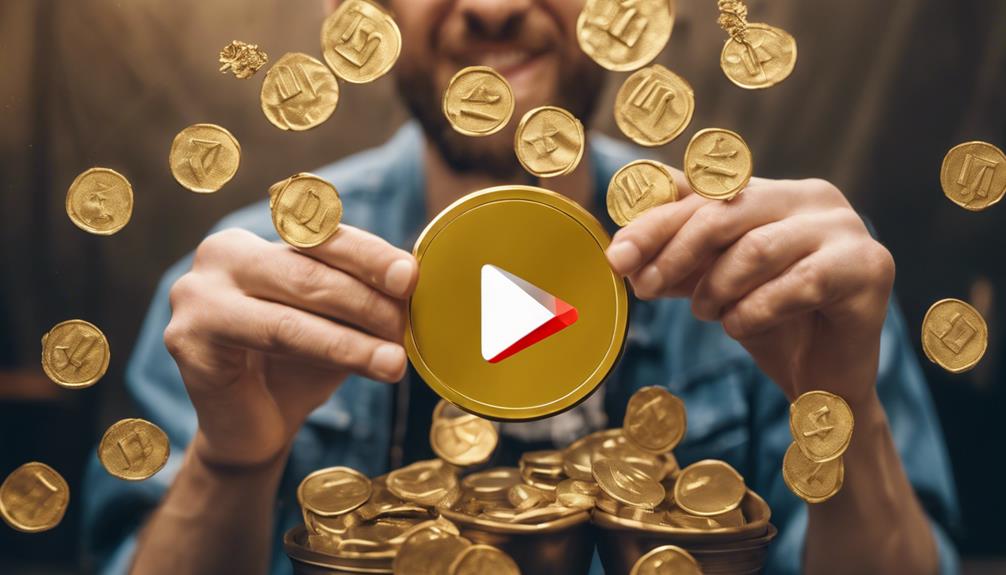
Do YouTube pay for shorts?
Navigating the world of YouTube Shorts is like journeying through a dense forest; it can be overwhelming and full of uncertainties. You might be wondering whether YouTube pays for these bite-sized videos or not. It’s a question that’s pertinent, given the rising popularity of this form of content.
Well, the answer isn’t as straightforward as you might assume. There’s more to unravel here; will you venture further to discover the monetary potential of YouTube Shorts?
Key Takeaways
- YouTube Shorts are not monetized through ads like regular videos.
- Shorts viewed outside the Shorts shelf can generate ad revenue.
- YouTube’s $100 million Shorts Fund pays creators based on viewer engagement.
- Additional earnings can be made via sponsorships, affiliate marketing, and other income streams.
Understanding YouTube Shorts

Diving right into the heart of the matter, YouTube Shorts are short-form, vertical videos that you can create using your smartphone, marking YouTube’s bold step into the competitive world of mobile-first content. This innovative format is designed to capture the bustling market of mobile users who crave quick, digestible content.
The Shorts algorithm plays a crucial role in this new era of content creation. It’s an intelligent system that learns from your viewing habits and preferences, delivering a personalized feed of Shorts tailored to your tastes. As a creator, understanding this algorithm is essential to increase your visibility and reach. The more you can align your content with what the algorithm values, the higher your chances of securing a spot in a user’s feed.
User engagement is another key metric in the world of YouTube Shorts. The platform encourages interaction through likes, comments, and shares. The more interaction your content receives, the higher the likelihood of it being suggested to other users. In essence, YouTube Shorts are designed to foster a dynamic and interactive viewing experience, with user engagement serving as a critical measure of success.
YouTube’s Monetization Policies
You might be wondering about YouTube’s monetization policies and how they relate to earning from shorts.
It’s essential to understand how YouTube’s monetization works, and how it impacts creators’ income from shorts.
These policies are the keys to unlocking potential profits from your short videos on the platform.
Understanding YouTube’s Monetization
To grasp the potential for earning through YouTube Shorts, it’s vital to first understand YouTube’s monetization policies and how they operate. You need to be aware of the monetization strategies and the content copyright rules that YouTube enforces for all creators.
| Monetization Strategies | Description | Content Copyright |
|---|---|---|
| Ad revenue | You earn from display, overlay, and video ads | Must own all rights to visuals and sound |
| Channel memberships | Your members make recurring payments for special perks | No copyrighted content allowed |
| Merchandise shelf | Your fans can browse and buy official branded merchandise from your watch page | Original design required, no infringement on others’ copyright |
These policies shape how you can earn from your content on YouTube. Understanding these rules is the first step towards making money through YouTube Shorts.
Earnings From Shorts
In light of YouTube’s monetization policies, it’s essential to note how these rules apply specifically to YouTube Shorts and the potential earnings they can generate.
- Ad Revenue: Currently, YouTube doesn’t share ad revenue with Shorts creators. You won’t earn directly from views or likes.
- Shorts Fund: YouTube has established a $100 million Shorts Fund. Eligible creators can earn from this fund based on audience engagement.
- Affiliate Marketing: You can utilize affiliate marketing within Shorts. You promote products and earn commission when viewers make purchases using your links.
- Shorts Sponsorship: Brands might sponsor your Shorts, paying you to create content around their products or services.
While Shorts monetization can be limited, creative strategies and innovative approaches can lead to substantial earnings.
How YouTube Payments Work

You might be wondering how YouTube payments work.
The process is anchored on YouTube’s monetization policies and largely driven by revenue from advertisements.
Understanding this mechanism is key to grasping how creators earn from YouTube, especially from shorts.
Understanding YouTube Monetization
Navigating the complexities of YouTube’s monetization process can seem daunting, but it’s essential to understand how these payments work if you’re aiming to earn revenue from your video content. Here’s a clear breakdown:
- Creator Studio Insights: This is your dashboard for tracking earnings and performance. It’s where you’ll see direct income from YouTube.
- Video Copyright Rules: Follow these guidelines to avoid content strikes that could lead to demonetization.
- Channel Membership: This feature allows your fans to support your work directly, with monthly payments in exchange for perks.
- Super Chat & Super Stickers: These are ways for fans to donate during live streams, giving you another income stream.
Monetization isn’t just about ads – it’s about creating a sustainable business model.
Revenue From Advertisements
Building off the fundamentals of YouTube monetization, let’s now focus on the intricacies of earning revenue from advertisements, a major component of how YouTube payments function.
Mastering ad targeting strategies is crucial. It’s not just about quantity, but quality. Ads need to be tailored to your viewer demographics. Analyzing these demographics can help you understand who’s watching your content and what they’re interested in. This, in turn, can inform the kind of brands you might want to partner with or the type of ads to run on your videos.
Eligibility for Monetizing Shorts
Not every creator can reap the monetary benefits of YouTube Shorts, as there are specific eligibility requirements to meet before one can start monetizing this content. You, as a creator, have the responsibility of understanding and meeting these requirements for your Shorts performance metrics to translate into earnings.
Here’s a rundown of the key eligibility criteria:
- Channel’s Subscriber Count: Your channel needs to have a substantial number of subscribers. The exact count isn’t disclosed by YouTube, but it’s generally considered that a larger subscriber base improves your chances.
- Content’s Originality: Your Shorts need to be original and creative. Repurposed content from other channels or any form of copyright infringement is a no-go.
- Compliance with YouTube’s Policies: Your content must comply with YouTube’s community guidelines and terms of service. Any violation can lead to demonetization.
- Engagement Metrics: YouTube considers metrics like watch time, likes, shares, and comments while deciding on monetization. Higher engagement metrics improve your chances.
Exploring the YouTube Partner Program

Understanding the YouTube Partner Program is crucial as it’s the gateway to monetizing your Shorts and fully reaping the benefits of your creative efforts. This program is a dynamic platform that offers a myriad of Partner Benefits, enabling you to transform your innovative content into a sustainable income source.
The Partner Benefits are multifold. You become eligible to earn from ads, channel memberships, Super Chat, and the YouTube Premium revenue pool. Besides, you receive professional support, advanced analytics, and creative resources to propel your channel growth.
However, you need to fulfill certain Program Requirements to unlock these benefits. First, you have to live in a country where the program is available. You must accumulate at least 4,000 valid public watch hours in the last 12 months and maintain a minimum of 1,000 subscribers. And most crucially, you should adhere to all of YouTube’s policies and guidelines.
Navigating the YouTube Partner Program can seem complex, but it’s worth the effort. By meeting all requirements and leveraging the provided benefits, you’re not just monetizing your content, but crafting a sustainable future on this platform.
How Ad Revenue Applies to Shorts
Despite meeting all the YouTube Partner Program requirements, you might be wondering how ad revenue actually applies to Shorts, a feature designed for creating and sharing short videos.
Here’s the crux: Ad revenue doesn’t directly apply to Shorts as it does to regular videos. However, this doesn’t mean you’re left empty-handed. To understand this better, let’s break it down:
- Viewer Engagement: Unlike traditional videos, Shorts aren’t monetized through ads. Instead, viewer engagement becomes the prime factor affecting your earnings. The more interaction, the higher the potential revenue.
- Shorts Analytics: YouTube provides analytics specifically for Shorts. You can analyze the performance of your Shorts, track viewer engagement and optimize your content accordingly.
- Ad Revenue from Regular Views: If your Short is viewed outside the Shorts shelf (like in the Subscriptions feed or through direct links), it’s eligible for ad revenue.
- Shorts Fund: As an alternative, YouTube has introduced the YouTube Shorts Fund, a $100 million fund designed to reward creators for their Shorts content.
Additional Revenue Streams on YouTube

Diving deeper into monetization on YouTube, it’s worthwhile exploring additional revenue streams that can supplement earnings from your content, including channel memberships, merchandise shelf, Super Chat, and YouTube Premium.
Channel memberships allow your subscribers to pay a monthly fee for exclusive perks. This revenue stream provides a steady income and strengthens your community engagement. The merchandise shelf allows you to sell your products directly from your YouTube channel. It’s a great opportunity to boost your income while reinforcing your brand image among your audience.
Super Chat, meanwhile, is a feature that lets viewers pay to have their comments highlighted during your live streams. It’s a dynamic way to interact with your audience while also monetizing your content. YouTube Premium, on the other hand, is a subscription service where you earn a cut from the ad-free experience provided to subscribers.
Sponsorship opportunities abound on YouTube, presenting a chance for brands to sponsor your content. It’s a win-win scenario, boosting your revenue while giving the sponsor exposure. From merchandise selling to strategic partnerships, your YouTube channel can be a multifaceted income source. By leveraging these additional revenue streams, you can maximize your earnings beyond ad revenue.
Maximizing Earnings From Youtube Shorts
To maximize your earnings from YouTube Shorts, it’s crucial to grasp how this newer feature can act as a revenue driver. In the quest for innovation, you must understand the dynamics of the platform and then align your strategies effectively.
Here’s a four-step approach to maximize your earnings:
- Pursue Shorts Sponsorship Deals: Brands are always on the lookout for innovative content creators. Hence, striking sponsorship deals with them can lead to a significant increase in your earnings.
- Audience Engagement Strategies: The more engaged your audience is, the more likely they’ll watch your shorts to the end. Implement strategies like adding a hook in the beginning or asking questions to encourage comments.
- Promote Your Shorts: Leverage your other social media platforms to drive traffic to your shorts. A higher number of views often translates to higher earnings.
- Consistency is Key: Regularly uploading high-quality shorts can help you gain a loyal audience over time. This can lead to an increase in views and, consequently, earnings.
Case Study: Successful Shorts Monetization

Taking inspiration from these strategies, let’s examine a real-world example of successful monetization through YouTube Shorts.
Consider the case of Jake, a lifestyle vlogger who embraced Shorts optimization strategies to increase his revenue stream. Initially, Jake’s channel had limited reach. However, he began creating engaging, bite-sized content using Shorts, focusing on trending topics and incorporating SEO-friendly keywords into the titles and descriptions.
His efforts paid off, with his Shorts garnering millions of views within weeks. This sudden spike in viewership didn’t just increase his exposure but also attracted potential advertisers, leading to a substantial increase in his monetization.
However, Jake didn’t stop there. Recognizing the influencer partnerships impact, he collaborated with other popular YouTube creators. This strategic move further increased his YouTube channel’s visibility, leading to a substantial growth in his subscriber base.
In essence, Jake’s success story illustrates the power of YouTube Shorts not only as a content avenue but also as a monetization tool. By adopting effective Shorts optimization strategies and leveraging influencer partnerships, you too can maximize your earnings from this platform. Be innovative, be strategic, and remember, success won’t come overnight, but with consistency and creativity, it will come.

